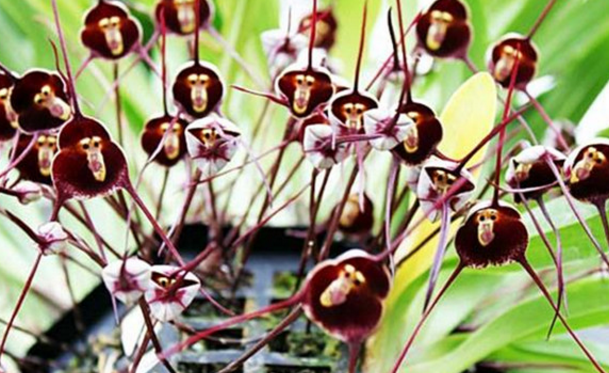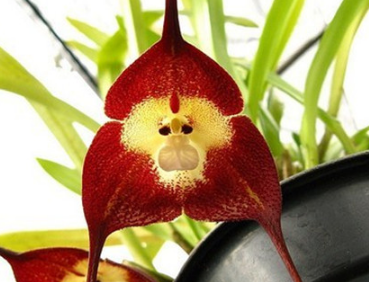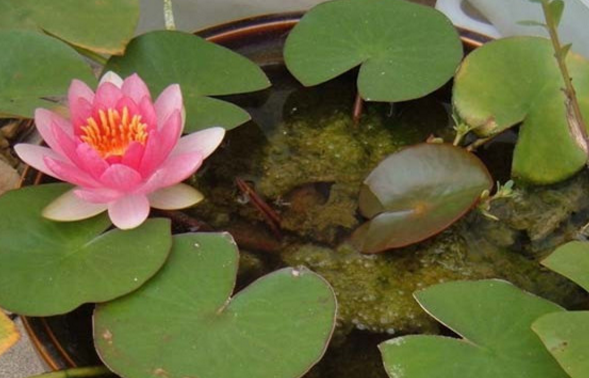What are the common insect pests and control methods that Sun Dasheng should pay attention to?
There are four propagation methods of Dracula macatensis, which are seeding, plant division, tissue culture and aseptic propagation. The requirements for tissue culture and aseptic reproduction are slightly higher, and the general flower friends do not use it. The waiting time for sowing is long, so the flower friends generally use the method of dividing plants.

What do you need to pay attention to when you plant monkey face dragon orchid?
1. Selection of ramet time of Dracula simiana
The ramets of the monkey face dragon orchid are best carried out after the soil thaws in early spring, that is, February-March.
Take out the mother plant from the flowerpot, shake off the excess pot soil, separate the root system as much as possible, cut it into two or more plants with a sharp knife, and each plant divided should have a considerable root system, and trim its leaves appropriately to facilitate survival.
2. Precautions for monkey face small dragon orchid ramets: basin disinfection
Soak the divided small plants in chlorothalonil 1500 times solution for five minutes, then take them out and dry them, and then put them into the basin. Can also be used immediately after the basin irrigation root chlorothalonil.
3. Management after the rationing of Dracula monkey-faced
After the plants are potted, they are irrigated or watered once. Because its roots are greatly damaged and its water absorption ability is extremely weak, it takes about 3 ~ 4 weeks to recover and germinate new roots. Therefore, watering should be restricted within 3 ~ 4 weeks after splitting to avoid rotten roots, but transpiration of its leaves is not affected. In order to maintain water balance of leaves, it is necessary to spray leaves 1 ~ 3 times a day (spray more at high temperature, spray less or no spray at low temperature). Don't fatten up during this time either. After the plant division, but also pay attention to the sun is too strong, it is best to put in the shade shed maintenance.
4. Transplanting after plant division of Cymbidium monkeyense
When the seedlings are potted, first put 2 ~ 2 cm thick coarse grain matrix or ceramsite into the bottom of the pot as a filter layer, sprinkle a layer of fully decomposed organic fertilizer as a base fertilizer, the thickness is about 1 ~ 2 cm, and then cover a layer of matrix, the thickness is about 1 ~ 2 cm, and then put in the plants to separate the fertilizer from the roots to avoid burning the roots.
5. Substrates selection of upper pots of Cymbidium simiense ramets
The following peat + pearlite + ceramsite =2 + 2 + 1 peat + slag + ceramsite =2 + 2 + 1 sawdust + medium coarse river sand =2 + 2 + 1 can be selected. After finishing the basin, pour a permeable water, and put it in a slightly shady environment for a week.
When transplanting seedlings, dig planting holes first, sprinkle a layer of organic fertilizer at the bottom of planting holes as base fertilizer (base fertilizer), the thickness is about 4 ~ 6 cm, then cover a layer of soil and put seedlings in order to separate fertilizer from roots and avoid burning roots.
Common pests and control methods
1. Common pests of monkey face dragon orchid: aphids
Aphid pest performance of monkey face small dragon orchid:
Often groups harm the young leaves, buds, etc. of the monkey face small orchid, and suck the sap with nymph and adult puncture.
Monkey face small dragon orchid aphid control methods:
A small amount can be brushed with a brush, treated by spraying 1000 times solution of aphidizing wettable powder, or 2.5% cypermethrin EC 2000-3000 times solution, or 40% methomyl 1000 times solution or 1500 times solution of aphidimidine EC, etc.
2. Common pests of monkey face dragon orchid: scale insects
Monkey face dragon orchid scale insect pest performance:
Adult and nymph absorb sap from petiole, leaf base and leaf surface to produce yellow spots. Scale insects are easy to breed and harm in poor ventilation environment.
Monkey face small dragon orchid scale insect control methods:
Ensure ventilation. Once scale insects occur, spray 25% buprofezin WP 1000 times solution or 40% Sukill EC 800-1000 times solution once every 7 days for 2-3 consecutive times.
3. Common pests of monkey face dragon orchid: snail
Monkey-faced dragon orchid snail pest performance:
Mostly nibbling on sprouts, leaves, buds and roots at night. In June to October, wet environment should be timely prevention and control.
Monkey-faced dragon orchid snail control methods:
Sprinkle lime powder on the ground, or use 8% Miewuling granules to spread where it appears, or spray pesticides such as trichlorfon on the leaves.
4. Common pests of monkey face dragon orchid: slugs
Monkey-faced dragon orchid slugs pest performance:
It is also called water snake, which is called snake (not snake) in some areas of southern China. It is commonly known as slug. It is a kind of mollusk and some snails form pulmonary order. Hermaphrodite, looks like a shell snail, wet with mucus, very disgusting.
Monkey-faced dragon orchid slugs control methods:
This is a popular method, which is to sprinkle salt on the slug and let it dehydrate and die. It's very cruel, but who asked it to harm our big brother monkey face little dragon orchid!
- Prev

The main value of the culture method of monkey face and small dragon orchid
Monkey face Little Dragon Orchid, also known as monkey face orchid, is another masterpiece of nature's miraculous craftsmanship, not only hitting our big brother Sun WuKong, but also a faint smell of flowers, which makes people really want to start a pot and watch it every day! The Culture method of Monkey face Little Dragon Orchid
- Next

How to cultivate lotus in water and how to use water
The bowl lotus, literally means the lotus planted in the bowl, of course, it can not only be raised in the bowl. The bowl lotus is small and lovely, elegant in posture and properly farmed, so it is quite an artistic conception for watching bonsai. Today we will learn about how to raise bowl lotus! How to cultivate bowl lotus the culture method of bowl lotus
Related
- Fuxing push coffee new agricultural production and marketing class: lack of small-scale processing plants
- Jujube rice field leisure farm deep ploughing Yilan for five years to create a space for organic food and play
- Nongyu Farm-A trial of organic papaya for brave women with advanced technology
- Four points for attention in the prevention and control of diseases and insect pests of edible fungi
- How to add nutrient solution to Edible Fungi
- Is there any good way to control edible fungus mites?
- Open Inoculation Technology of Edible Fungi
- Is there any clever way to use fertilizer for edible fungus in winter?
- What agents are used to kill the pathogens of edible fungi in the mushroom shed?
- Rapid drying of Edible Fungi

